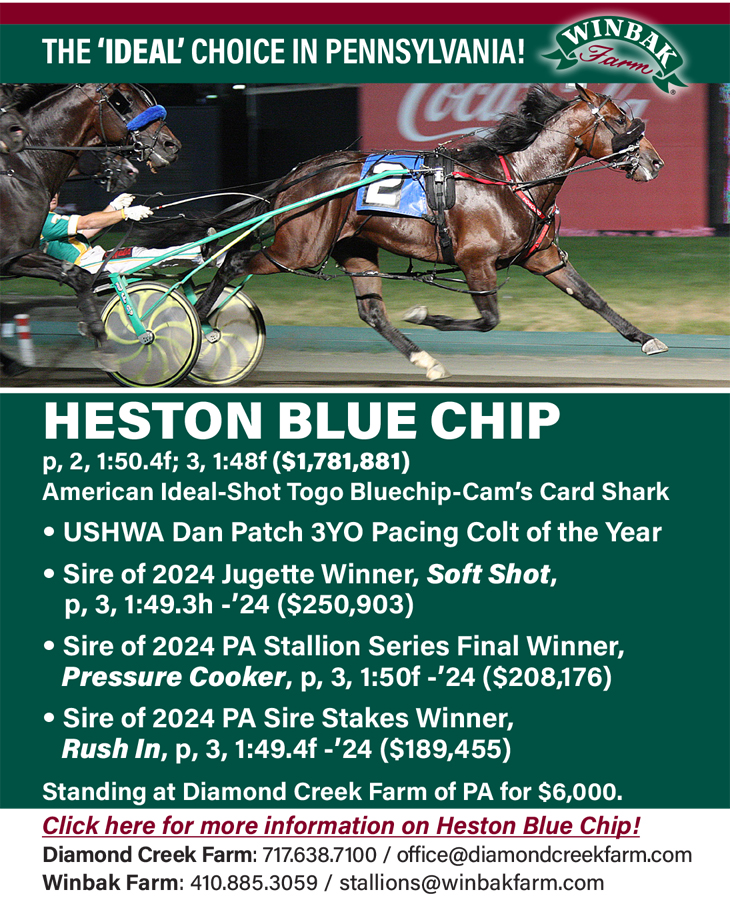
Racing’s continuing conundrum
Making positive change that benefits both bettors and horsepeople is a tricky business.
by Brett Sturman
Last week on Facebook, the Tetrick Racing fan page posed a question to the racing community in the form of a New Year’s resolution: What changes would you like to see implemented in harness racing? As of press time, the question had elicited an incredible number of nearly 300 responses.
After reading through them all, one thing that I took from the collective comments is that man, do people really hate post drags. The other, is that a noticeable number of responses continued to point out the disconnect between horsepeople (owners, trainers and drivers) and wagering interest in the sport.
In a column last year, I talked about what is a reasonable balance when it comes to bettors expecting drivers out to drive a horse fairly each race, and drivers in part needing to look after the well-being of their horse. What’s now even more apparent is some of the things horsepeople would like to implement would, unintentionally, be a detriment to the sport from a betting standpoint.
One suggestion that was made a number of times was the idea of paying out purse money to every horse in a race, instead of paying the traditional one-through-five placings.
The appeal of the suggestion is obvious. Who wants to pay to ship a horse all over, race in freezing cold weather and then come home empty handed? But the problem is that paying out to every horse in a race would only worsen the racing product. For those who think racing is boring as it already is, it wouldn’t get any better if every horse is guaranteed at least some type of check for doing nothing.
As someone whose father owned a few dozen horses for a number of years, I understand what a small-time owner goes through sometimes and how receiving money for starting a horse in an overnight race may pay for at least something, but it’s not the way to go.
If we’re being honest, everyone knows that because of slots almost everywhere in the country races are going for far more money than they ever would dream of without slots. Everyone wants a piece of that pie, but horses should have to compete to earn checks and should be in the business of winning races; not being paid to show up. It’s the only thing that will help make racing a better product and a product that people want to bet on. Giving away free money won’t help that.
There’s certainly changes that can be made, but those changes should benefit both horsemen and at the same time increase the amount of money bet into the races.
For example, let’s stay with the purse structure example. Instead of paying out to every horse, what if the driver and trainer commissions were adjusted? Currently at five per cent of purse earnings for driver and trainer each, wouldn’t doubling this commission to 10 per cent each incentivize drivers to be more aggressive and for trainers to be more aggressive as to where they enter their horses?
Five per cent may be enough for all the top drivers, but for many drivers who don’t drive for the highest purses, finishing fifth in a $5,000 race only yields a driver a little over $12. Ten per cent to the jockey and 10 per cent to trainer is what the scale looks like in thoroughbred racing, and those races are more hotly contested than your average harness race. A change such as that would benefit both drivers and trainers and while owners would take a slight cut, the overall product would be improved as there is an increased incentive to finish in a top spot.
In another instance, this past stakes season a trainer decried a track’s decision to contest one stake with 11 horses instead of two separate eliminations of six horses and five horses, which would have ensured nearly everyone went home with a check. It makes complete sense from an owner’s or trainer’s standpoint. After all, who wouldn’t love to compete in four- and five-horse fields for guaranteed stakes money, which happened numerous times throughout this past year?
But from a betting standpoint and product standpoint, it’s the 11-horse field that would have created a far more entertaining and bet-able race. There is no wrong side in this example either; it just goes to show the different mentalities.
The question becomes, which mentality should prevail? If you believe harness racing is first and foremost a gambling game, then you would say that rules should be put in place that take into account its appeal to the public. But if you look at the recent USTA industry report where handle was down in 2017 yet purses were up, you could basically say, ‘Who cares about the public?’ Where there used to be a completely obvious correlation between handle and purse, handle dollars have largely been replaced by slot dollars.
Albeit diminished and not as necessary as it once was, the wagering aspect of harness racing still exists and it needs to be realized by all participants in the sport. Horsepeople may have the upper hand now, but there may come a day when slots go away and the product will have to stand on its own by people still being around to bet into it.
The good thing is that of nearly all the suggestions on the Tetrick Racing fan page from those in the sport and enthusiasts of the sport, they can be implemented in a way so that horsepeople benefit and the product as a whole benefits.












